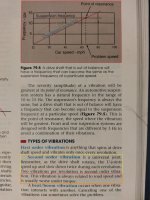2010 Fiat Ducato x250 2.3L Turbo Diesel
When accelerating between 80-110 kph the vehicle shakes. The vehicle is completely fine below 80 kph and above 110 kph. The strength of the shaking is directly proportional to the torque applied. As an example, cruising between 80-100 barely pressing the gas the shimmy is almost imperceptible. Accelerating on even ground it's noticeable but not horribly bad, however the greater the incline and the harder I press the pedal the worse it gets. So hard acceleration up a steep hill between 80-110 feels like the van will shake itself apart.
Tie rod ends are fine. The shimmy is felt in the entire vehicle and is very violent going uphill at hard acceleration, it's not felt just in the steering wheel.
Recent work done on the vehicle:
Replaced a torn outer CV boot on driver's side front axle. Noticed there is a little in / out play perpendicular to the vehicle's body. There is no such in/out play on the passenger side axle.
All four tires balanced and new hubs / bearings / discs on rear axle.
When accelerating between 80-110 kph the vehicle shakes. The vehicle is completely fine below 80 kph and above 110 kph. The strength of the shaking is directly proportional to the torque applied. As an example, cruising between 80-100 barely pressing the gas the shimmy is almost imperceptible. Accelerating on even ground it's noticeable but not horribly bad, however the greater the incline and the harder I press the pedal the worse it gets. So hard acceleration up a steep hill between 80-110 feels like the van will shake itself apart.
Tie rod ends are fine. The shimmy is felt in the entire vehicle and is very violent going uphill at hard acceleration, it's not felt just in the steering wheel.
Recent work done on the vehicle:
Replaced a torn outer CV boot on driver's side front axle. Noticed there is a little in / out play perpendicular to the vehicle's body. There is no such in/out play on the passenger side axle.
All four tires balanced and new hubs / bearings / discs on rear axle.


